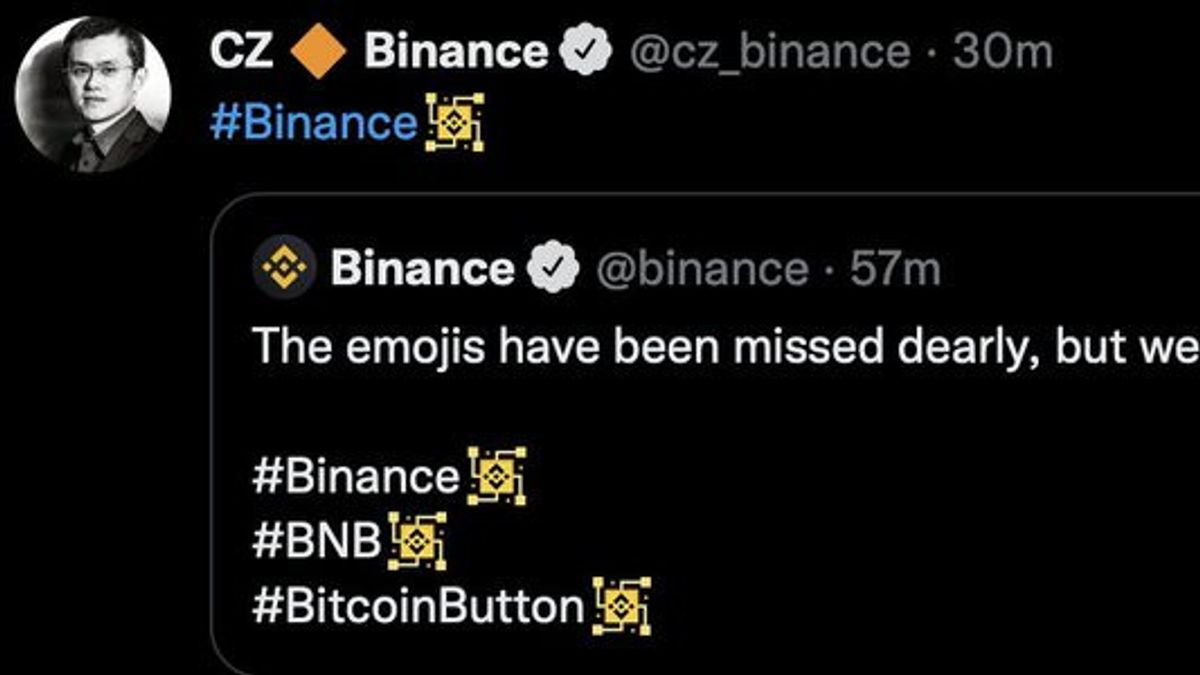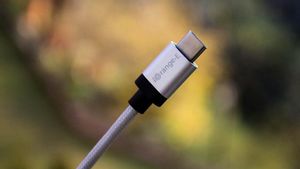JAKARTA – Binance, the world's largest cryptocurrency exchange agency, released a new Binance Emoji on Twitter that netizens accused of having a striking resemblance to the swastika of the Nazis.
On the morning of Wednesday, April 20, Binance CEO Changpeng Zhao (CZ), retweeted Binance's original post, adding “#binance” to show off the new emoji.
The new Binance emoji is a literal swastika pic.twitter.com/lCOuWuPnyF
— mann0000.eth 🦇🔊 (@nftshare) April 20, 2022
The original post, which has now been deleted, quickly circulated on Twitter in screenshot form. Many netizens immediately criticized it for its resemblance to the Nazi emblem.
A smaller Twitter account, Nftshare posted about it to their 300 followers which gained over 6000 likes and hundreds of retweets. The account says that "The new Binance emoji is a literal swastika". While other major accounts on Crypto Twitter rushed to make jokes about this Binance glitch.
If I was the worlds largest cryptocurrency exchange, I would just not make my logo a swatiska on Hitler’s birthday
— Bennett Tomlin (@BennettTomlin) April 20, 2022
Users also pointed to the fact that April 20 was also Hitler's birthday, which made the matter even more complicated for Binance. Most don't assume that Binance is making a deliberate reference to the Nazi party. Nor do they consider the error to be the result of an attempt to celebrate marijuana day 4/20 (April 20) which also falls on that day.
After initially deleting tweets from its own Twitter page and CZ's, Binance backed off by removing the emoji and making a public apology nearly eight hours after this first incident went viral.
SEE ALSO:
Binance told its 8.4 million followers that the mistake was clearly a disgrace. “We're not sure how the emoji went through the multiple layers of review without anyone noticing, but we quickly flagged the issue, pulled it down, and new emoji designs are rolling out as we speak,” Binance said as quoted by Cointelegraph.
While quite outspoken in his criticism of Binance, crypto critic Bennet Tomlin tempered his attacks by saying that the people working on the logo may not have the cultural knowledge to understand how it could be misinterpreted.
The swastika, synonymous with Nazism in the west, was originally used as a symbol of divinity and spirituality by many ancient religions in East Asia and remains a common sight in temples in countries such as Japan.
The English, Chinese, Japanese, Arabic, and French versions are automatically generated by the AI. So there may still be inaccuracies in translating, please always see Indonesian as our main language. (system supported by DigitalSiber.id)












